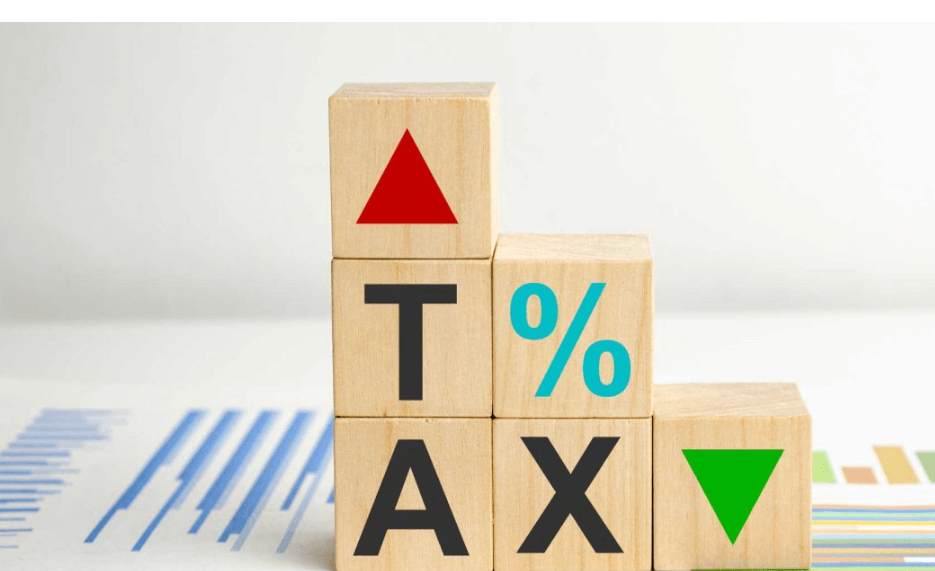📑Table of Contents:
I wanted to share some significant updates about the tax proposals in the Biden administration’s budget for 2025. This budget outlines the administration’s fiscal priorities and offers a glimpse into potential future tax policies. By examining these proposals within the context of Biden’s Fiscal Year 2025 Budget Highlights, we can better understand the direction and impact of the administration’s financial strategy.
Even though these tax proposals are unlikely to pass immediately due to the current political landscape, they provide a clear insight into the Democratic agenda for taxes as the expiration of the Tax Cuts and Jobs Act approaches in 2025. Understanding these proposals is crucial for anticipating future tax changes and preparing for their potential impacts.

Treasury Department’s “Greenbook” Explanation:
The Treasury Department has released the “Greenbook,” which comprehensively explains the revenue proposals included in President Biden’s budget. This document outlines ambitious plans to increase taxes on the wealthy and corporations to reduce the federal deficit by $3 trillion over the next decade. The “Greenbook” is a detailed guide to understanding the administration’s fiscal objectives and the mechanisms they propose to achieve them.
One of the driving factors behind these proposals is the financial strain of the COVID-19 pandemic. The pandemic led to unprecedented government spending to support public health and economic stability, significantly impacting the federal budget. The proposed tax increases are part of a broader strategy to address these budgetary challenges and ensure long-term fiscal health.
Key Tax Proposals:
The budget includes several notable measures that would affect various sectors of the economy. These measures reflect the administration’s priorities in promoting economic equity and generating revenue to fund essential programs. Here are some of the key proposals:
- Corporate Tax Rate Increase: The budget proposes raising the corporate tax rate from 21% to 28%. This increase ensures that corporations contribute a fair share to federal revenues, especially given many companies’ substantial profits in recent years.
- Revisions to International Tax Rules: The proposed changes to international tax regulations are designed to prevent profit shifting and tax avoidance by multinational corporations. These revisions aim to create a more equitable tax system where companies pay taxes based on where they generate their profits rather than where they can achieve the lowest tax rates.
- Increased Taxes on High-Income Earners: Individuals earning more than $400,000 annually would face higher tax rates under the proposed budget. This measure is part of a broader effort to address income inequality and ensure that the wealthiest Americans contribute a larger share of their income to federal revenues.
- Taxation of Pass-Through Businesses: The budget includes changes to how pass-through entities, such as S-corporations and partnerships, are taxed. These changes are intended to ensure that these businesses, which often benefit from preferential tax treatment, contribute fairly to the tax system.
Impact on Tax Policy Discussions:

While the budget proposal is unlikely to pass in its current form due to political opposition, it plays a crucial role in shaping the national dialogue on tax policy. As we approach the 2025 election, these proposals will influence discussions among policymakers, stakeholders, and the public.
The proposed budget highlights the Biden administration’s focus on addressing economic inequality and generating revenue to support federal programs. These discussions will be critical in shaping the tax landscape post-2025, influencing political platforms and legislative priorities. The administration is signaling its commitment to creating a more equitable and sustainable fiscal future by presenting these proposals.
In conclusion, the Biden administration’s fiscal year 2025 budget proposal offers a detailed vision of its tax policy goals. The “Greenbook” provides a roadmap for understanding these proposals, which aim to raise taxes on the wealthy and corporations to reduce the deficit and promote economic fairness.
While the budget may not pass as proposed, it will significantly influence future tax policy discussions and shape the fiscal landscape in the coming years. So, staying informed about these developments is essential for anticipating and preparing for potential changes in tax policy.
Economic Context
Understanding the economic context is crucial to grasping the rationale behind the proposals in Biden’s Fiscal Year 2025 Budget Highlights. By analyzing current economic indicators and trends, we can see how the administration’s budget priorities are designed to address the nation’s most pressing challenges and opportunities.
Current Economic Indicators and Trends
GDP Growth
- The GDP growth rate is a crucial indicator of the economy’s health. As of the latest reports, the economy has been experiencing moderate growth, with a projected GDP increase of around 2.5% for the upcoming fiscal year.
Unemployment Rate
- The unemployment rate has been steadily declining, currently sitting at approximately 4.2%. This reflects a recovering job market, though certain sectors still face challenges.
Inflation Rate
- Inflation remains a significant concern, with the annual rate hovering around 3.8%. Rising prices for goods and services impact both consumers and businesses.
Interest Rates
- The Federal Reserve has maintained a cautious stance on interest rates, which are currently at 5.5%. This influences borrowing costs and investment decisions across the economy.
Consumer Confidence
- Consumer confidence has shown signs of improvement, indicating optimism about personal financial situations and the broader economy.
How the Economic Environment Influenced the Budget Proposals
The economic environment has played a pivotal role in shaping the budget proposals outlined in Biden’s Fiscal Year 2025 Budget Highlights. With considerations such as GDP growth, unemployment rates, inflation, and interest rates in mind, the administration has crafted policies aimed at fostering economic recovery and addressing key societal needs. These proposals reflect a strategic approach to leveraging current economic conditions to support sustainable growth and ensure fiscal stability for the future.
Focus on Economic Recovery and Stability
- The budget emphasizes measures to support ongoing economic recovery and stability. Increased funding for job creation programs and small business support aims to bolster employment and economic activity.
Inflation Mitigation Efforts
- To address inflationary pressures, the budget includes provisions to manage supply chain disruptions and enhance production capacities. This is intended to ease price pressures in key sectors like energy, housing, and food.
Investment in Infrastructure
- Recognizing the need for long-term economic growth, the budget allocates substantial funds to infrastructure projects. These investments in transportation, utilities, and digital infrastructure are designed to enhance productivity and competitiveness.
Support for Social Programs
- With a focus on equity and social welfare, the budget increases funding for social programs such as Social Security, Medicare, and Medicaid. These measures aim to provide a safety net for vulnerable populations and ensure broader economic participation.
Education and Workforce Development
- The budget highlights significant investments in education and workforce development to address the skills gap and prepare the workforce for future industries. This includes funding for K-12 education, higher education, and vocational training programs.
Healthcare Reforms
- The budget proposes healthcare reforms to improve access and control costs. Increased funding for public health initiatives and efforts to address rising healthcare costs are key components.
Key Spending Priorities
In this section, we provide a detailed breakdown of the major spending areas in Biden’s Fiscal Year 2025 Budget. These spending priorities reflect the administration’s commitment to addressing critical needs and fostering sustainable growth. Here are the highlights of Biden’s Fiscal Year 2025 Budget:
Healthcare
- Medicare and Medicaid Expansion
- Increased funding to expand coverage and improve services.
- Introduction of new programs to lower prescription drug costs.
- Public Health Initiatives
- Significant investments in pandemic preparedness and response.
- Enhanced funding for mental health services and substance abuse programs.
Education
- K-12 Education
- Substantial increases in funding for public schools to reduce class sizes and improve teacher salaries.
- Expansion of early childhood education programs.
- Higher Education
- Increased Pell Grant awards to make college more affordable.
- Investments in community colleges and vocational training programs.
Infrastructure
- Transportation
- Major investments in modernizing public transit systems and expanding high-speed rail networks.
- Funding for repairing and upgrading roads, bridges, and airports.
- Digital Infrastructure
- Significant allocations for expanding broadband access in rural and underserved areas.
- Support for cybersecurity initiatives to protect critical infrastructure.
Climate Change and Sustainability
- Renewable Energy
- Increased funding for renewable energy projects, including solar and wind power.
- Incentives for businesses and homeowners to adopt clean energy solutions.
- Environmental Protection
- Investments in conservation projects and efforts to reduce carbon emissions.
- Support for communities impacted by climate change through resilience and adaptation programs.
Defense and National Security
- Defense Budget
- Funding to maintain and modernize the military’s capabilities.
- Investments in advanced technologies and cybersecurity measures.
- Veterans Affairs
- Enhanced support for veterans’ healthcare and benefits.
- Programs aimed at reducing veteran homelessness and improving mental health services.
Social Programs and Benefits
- Social Security
- Measures to ensure the long-term solvency of Social Security.
- Increased benefits for lower-income retirees.
- Poverty Alleviation
- Expansion of food assistance programs and housing support.
- Initiatives to improve access to affordable childcare.





